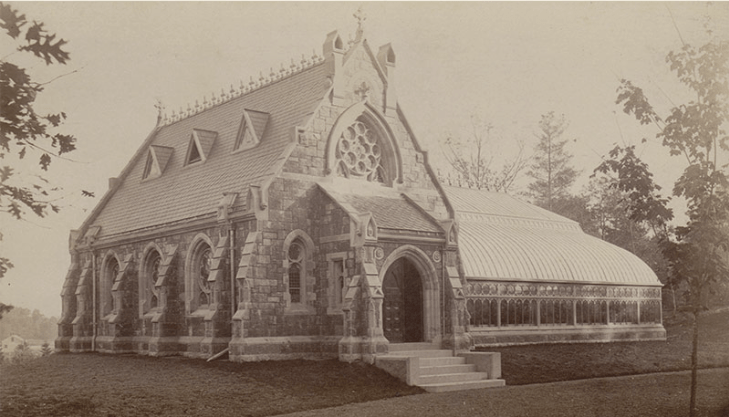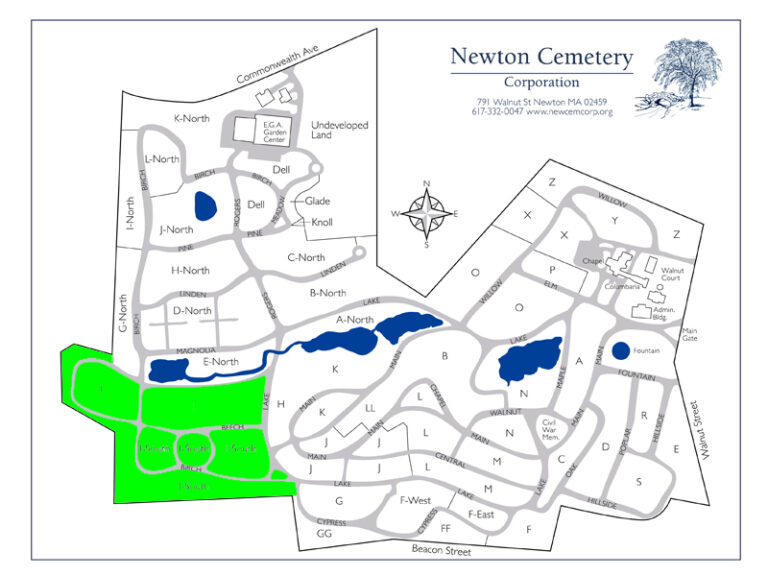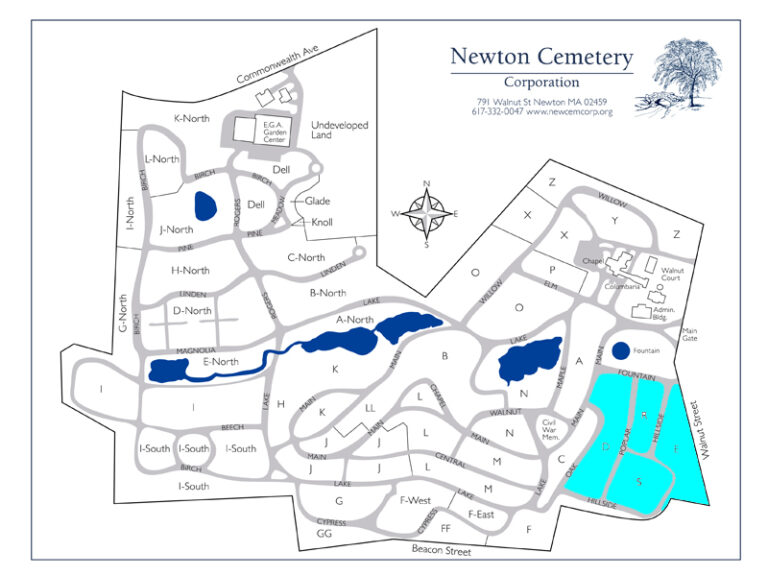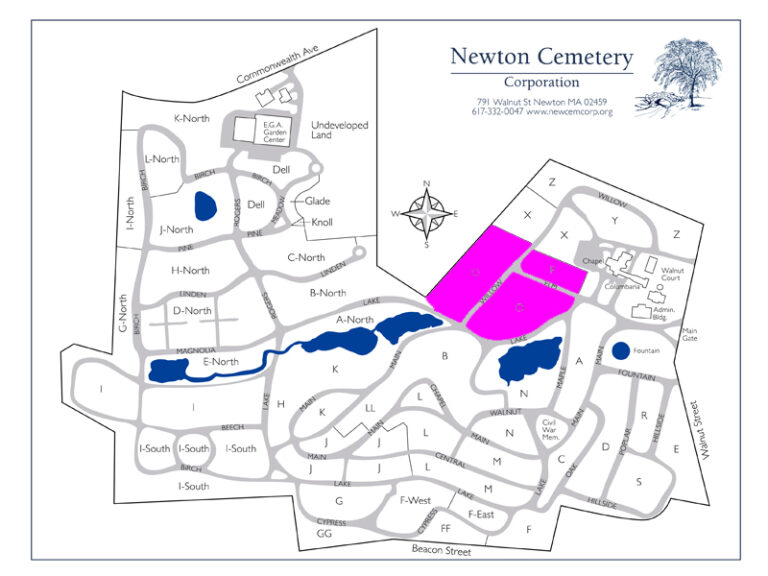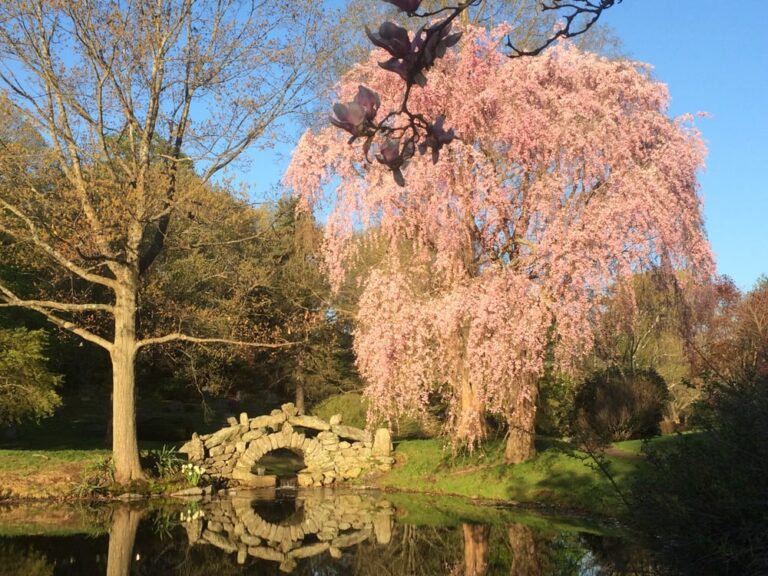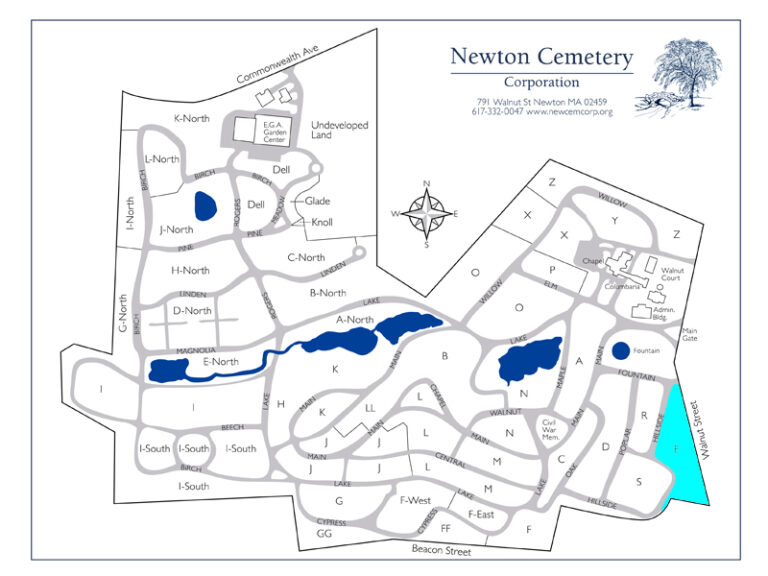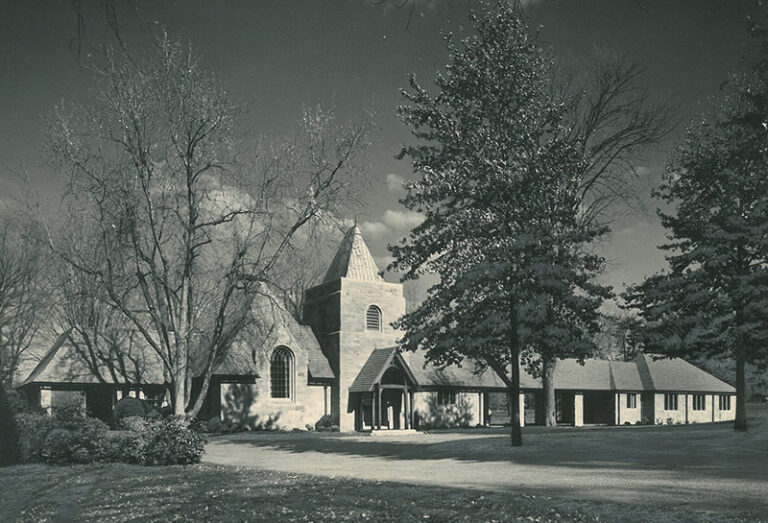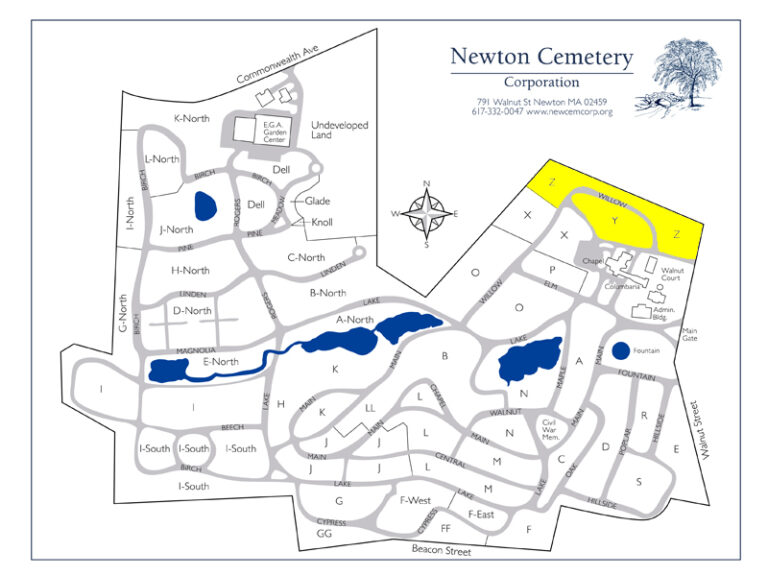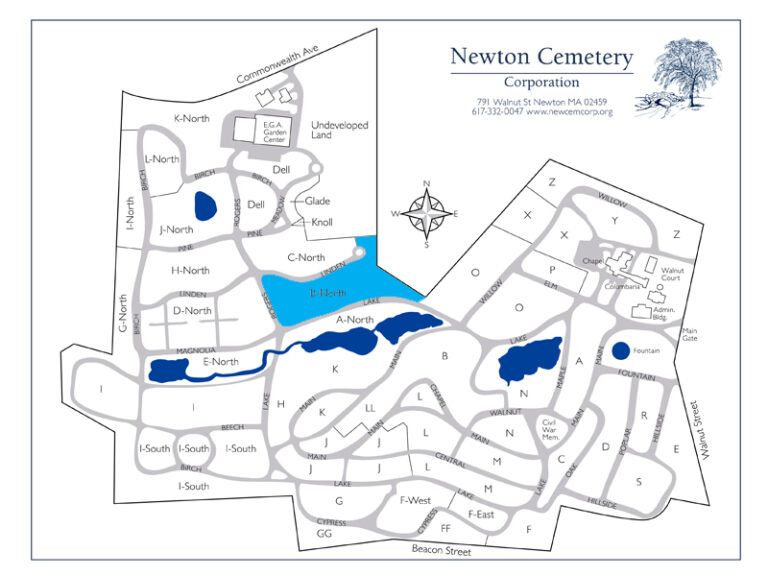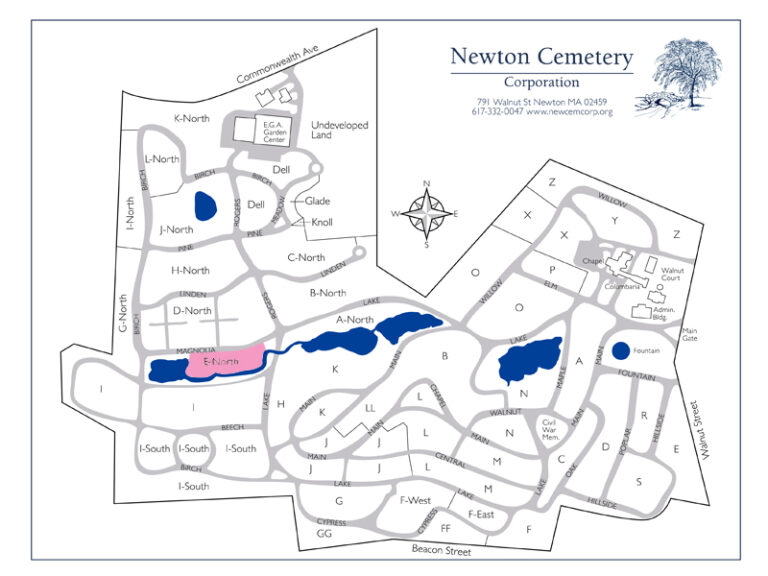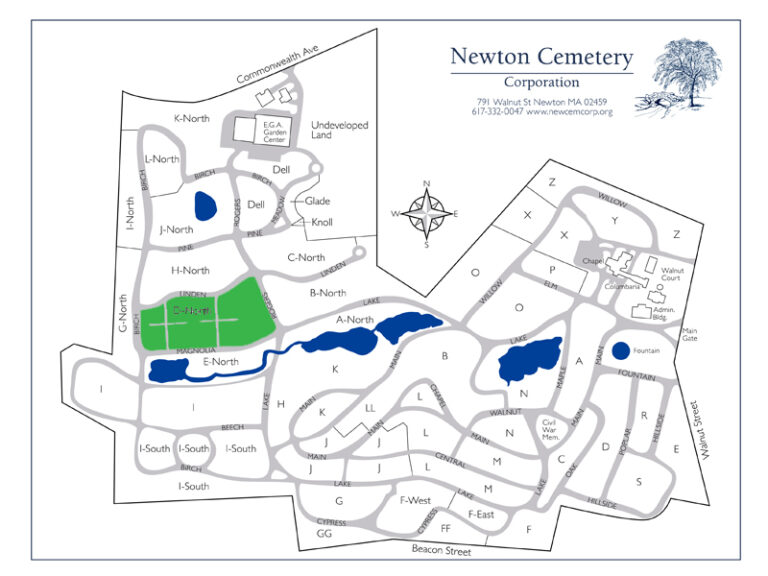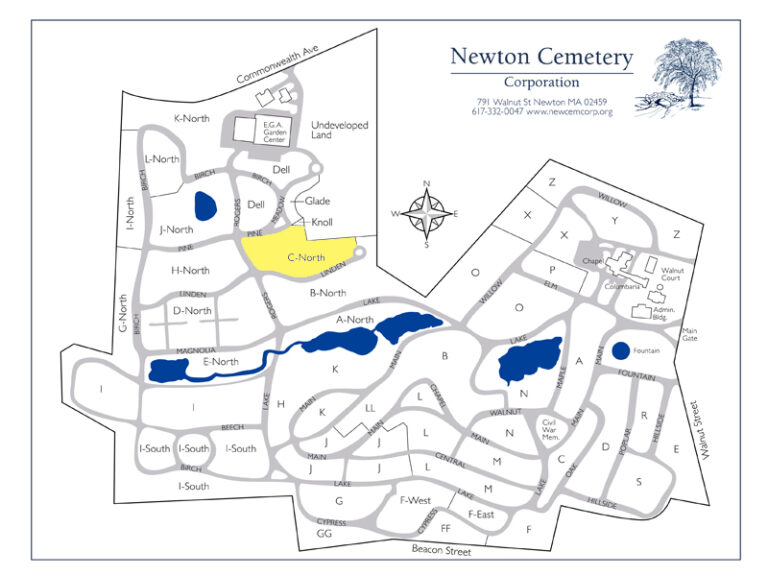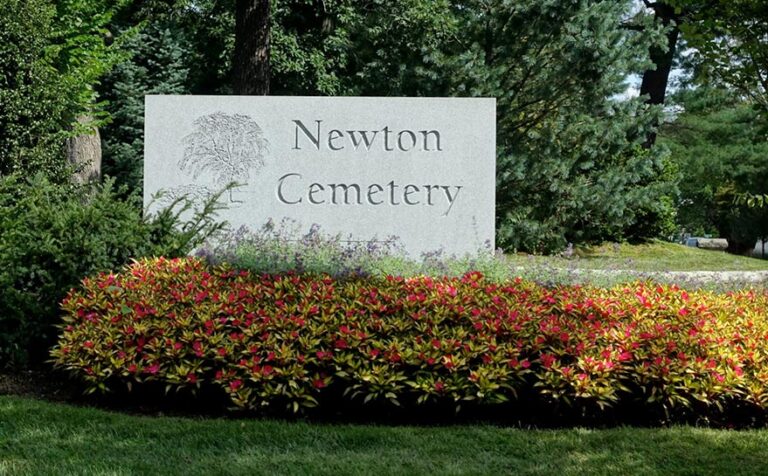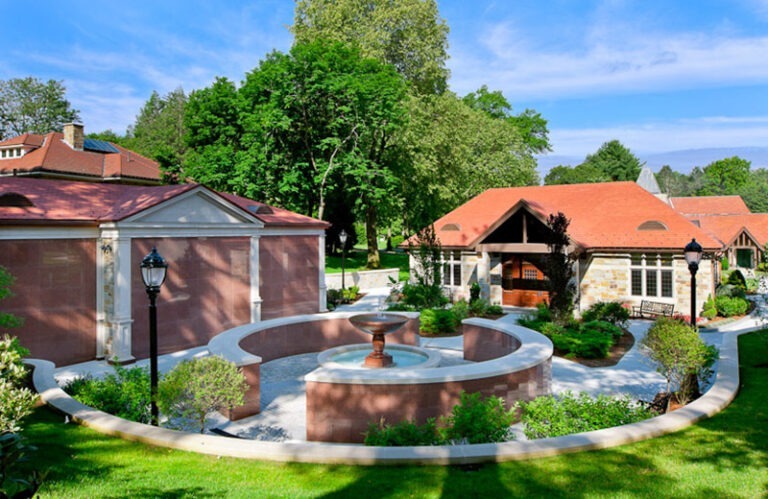Your cart is currently empty!

History
History of Newton Cemetery
Organized in 1855 and laid out in the popular “garden-style” design that began with Mount Auburn Cemetery near Boston, Newton Cemetery continues to reflect the “picturesque” aesthetic envisioned by its founders. At a time when there were no public parks or museums, Newton Cemetery became a destination spot, a place for quiet recreation and reflection, as well as a space to study art and architecture in the landscape. Trolley tracks led right up to the Walnut Street gates, the original of which were designed by George Meacham, a local architect who also designed the Boston Public Gardens.
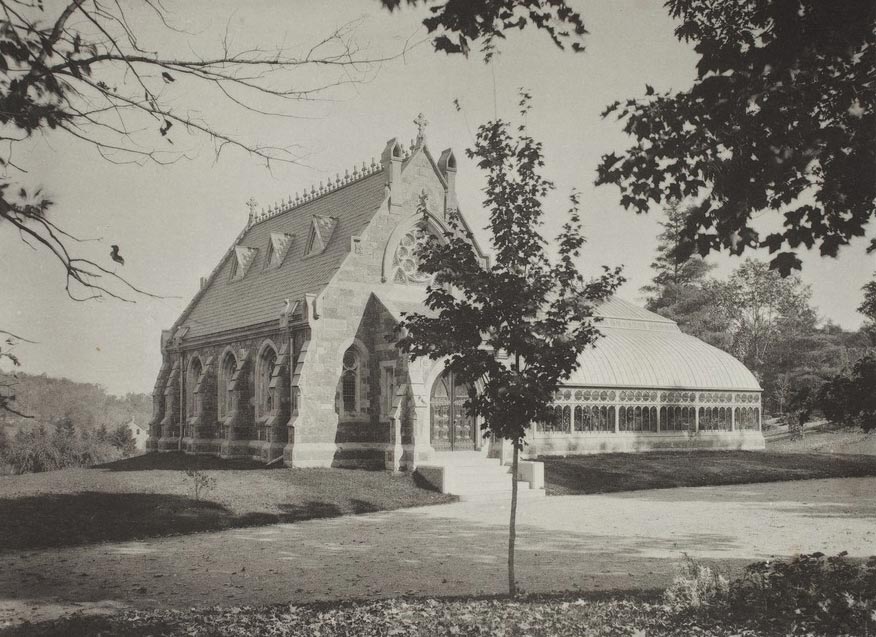
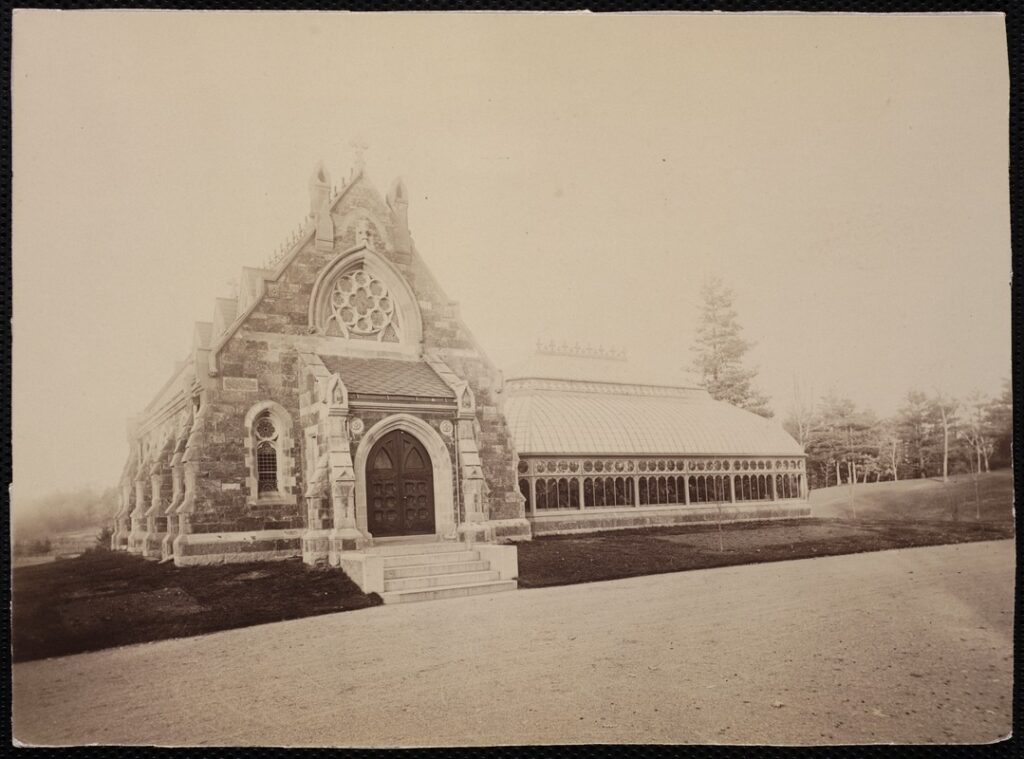
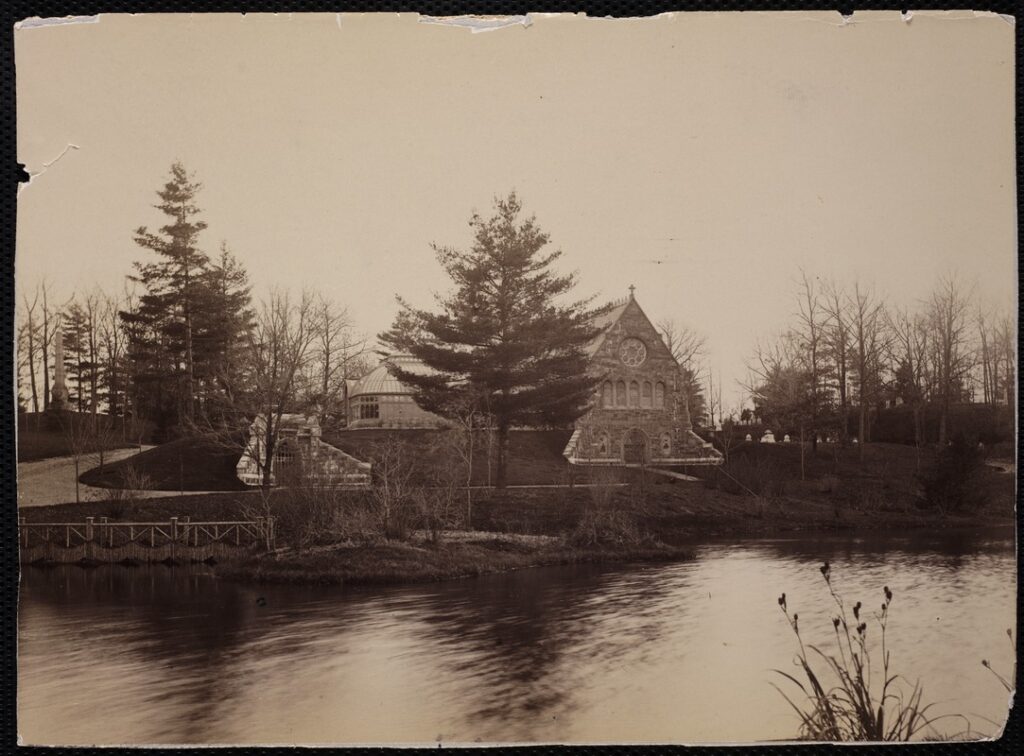
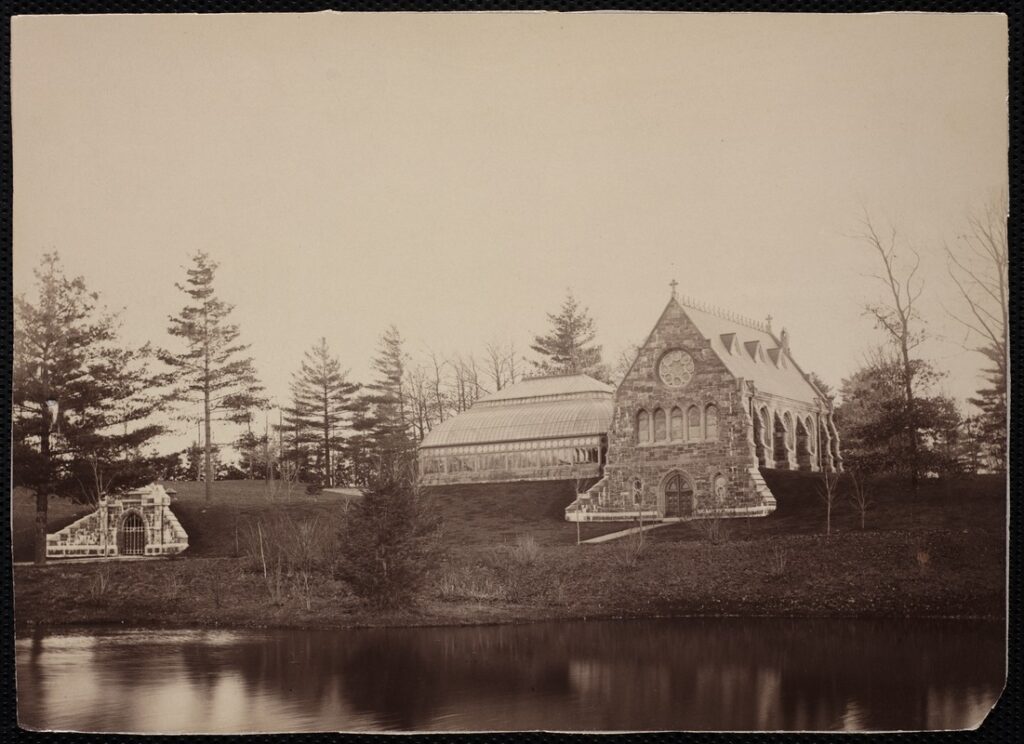
Under the supervision of cemetery president Dr. Henry F. Bigelow (1855-1866) and the care of superintendent Henry Ross (1860 – 1899), Newton Cemetery became an award-winning horticultural site that was awarded Level II arboretum status in 2014. The Civil War Soldiers’ Monument that was erected in 1864 (prior to the end of war) qualifies for listing on the National Register for Historic Places as the second such monument in the state. Originally 30 acres in size, Newton Cemetery is now nearly 100 acres, with the design of newly developed areas returning to the same picturesque landscape the Cemetery began with.
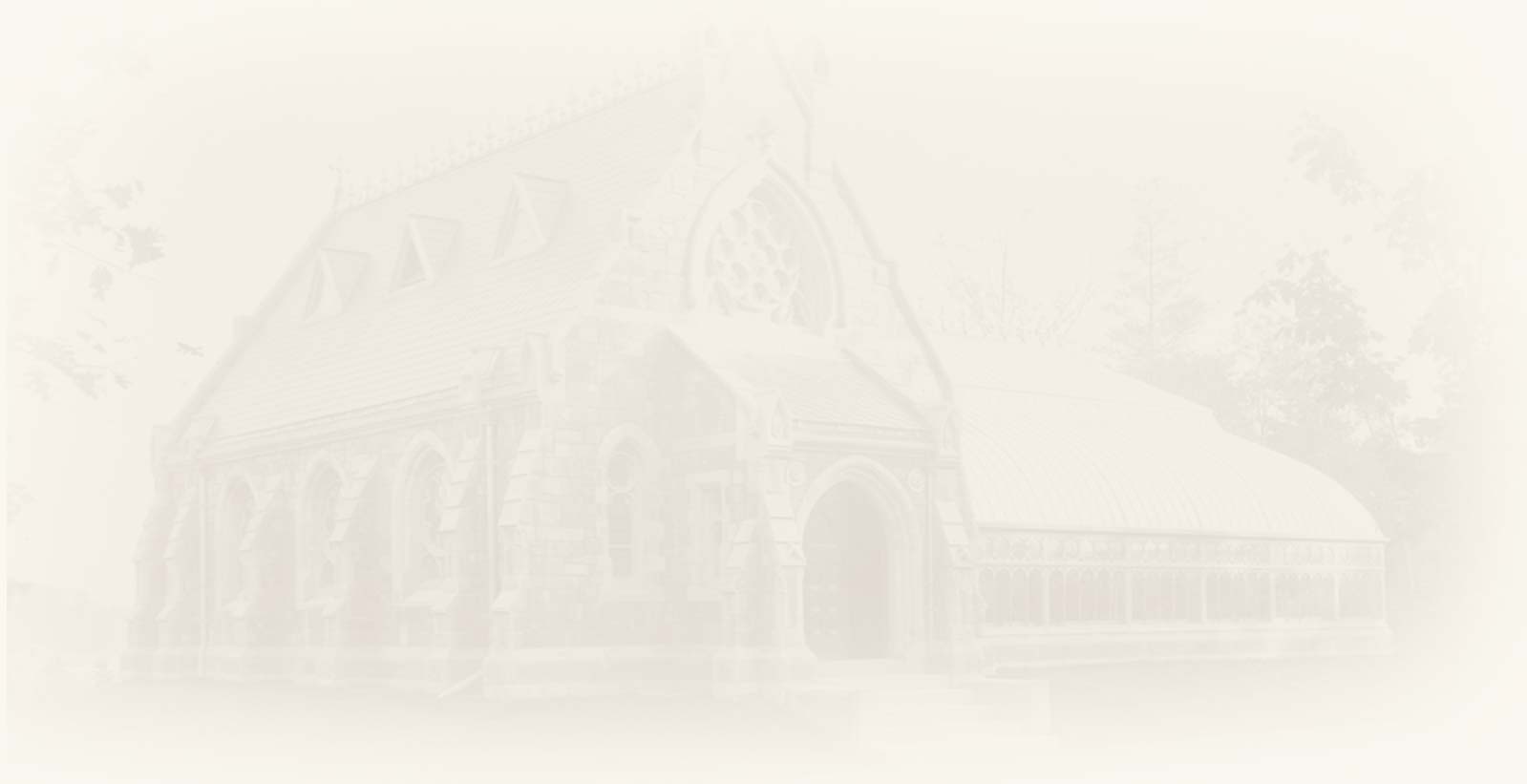
“Deep, ‘mid these dim and silent shades,
-Rev. Dr. Samuel F. Smith
The whispering winds shall linger here,
The slumbering dead shall lie, To lull their deep repose;
Tranquil, as evening fades Like music on the dewy air,
Along the western sky. Like nightfall on the rose.”
Poet Laureate of Newton and composer of “America”
(Composed for the consecration of Newton Cemetery in 1857)
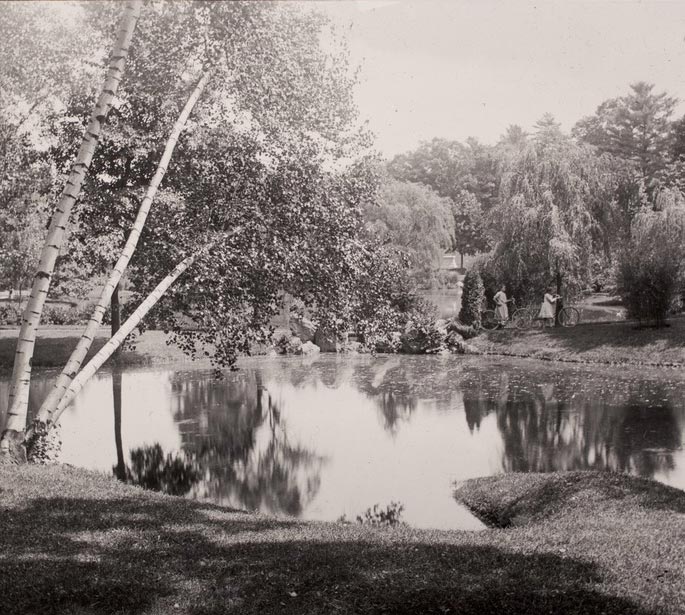
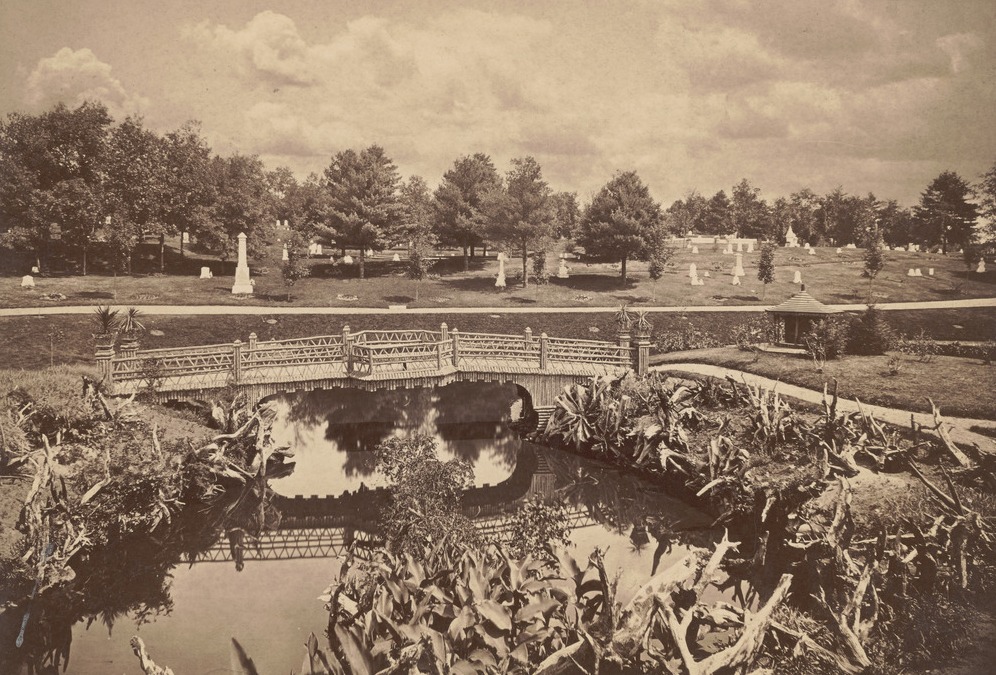
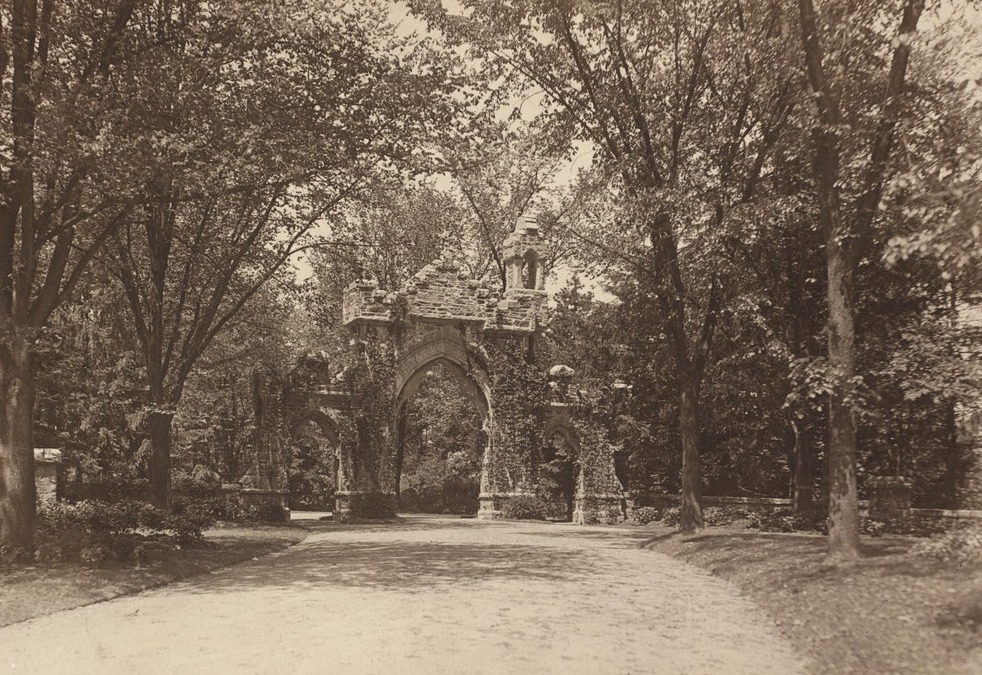
Newton Cemetery & Arboretum Timeline
1855 – 1859
April 5, 1855
Newton Cemetery Association was formed
Newton Cemetery was organized in 1855 and laid out in the popular “garden-style” design that began with Mount Auburn Cemetery near Boston.
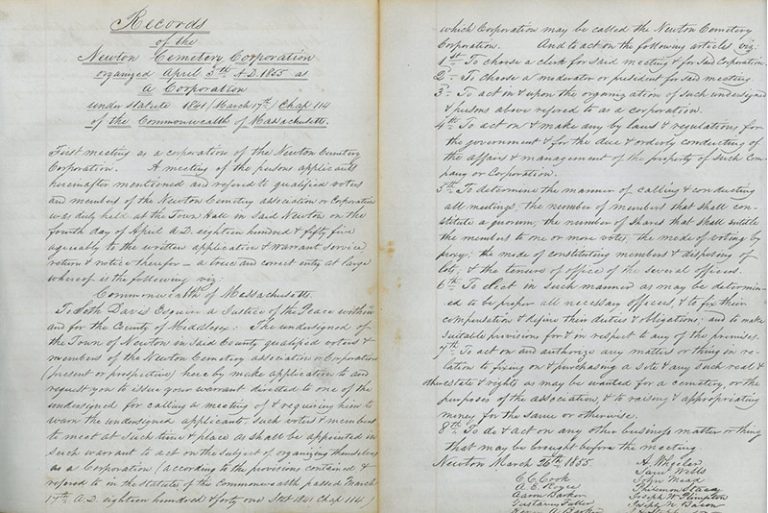
April 10, 1855
Barnas Sears appointed Newton Cemetery’s first president
June 1, 1855
Dr. Henry Bigelow appointed president
Dr. Henry Bigelow served as president of Newton Cemetery until his death on January 21, 1866 at the age of 48. Dr. Bigelow was a physician, founding member of the Channing Unitarian Society and Chairman of the School Committee. He lived in Newton Corner. According to an anonymous contributor to Newton, the Garden City of the Commonwealth, published by The Newton Graphic in 1902, “The Newton Cemetery was first conceived in 1854 when leading and influential citizens met together and after mature deliberation chose the present site…Dr. Henry Bigelow and Marshall S. Rice were the prime movers in the enterprise….”.
Newton Cemetery was established on April 5, 1855, with Dr. Bigelow one of the seven trustees chosen. The original chapel, dedicated in 1885, was the gift of John Farlow in memory of Dr. Bigelow. John Farlow’s tribute to Dr. Bigelow is engraved on the tablet above the entrance to the current chapel, built in 1941, and reads: To commemorate the virtues and unselfish labors of Doctor Henry Bigelow who died at Newton, Mass. January 21st 1866. This chapel was erected by one who esteemed him and who cherishes his memory as that of a kind friend a true Christian and public benefactor.
Dr. Henry Bigelow • 1885-1941
Buried in Section N, Lot 50
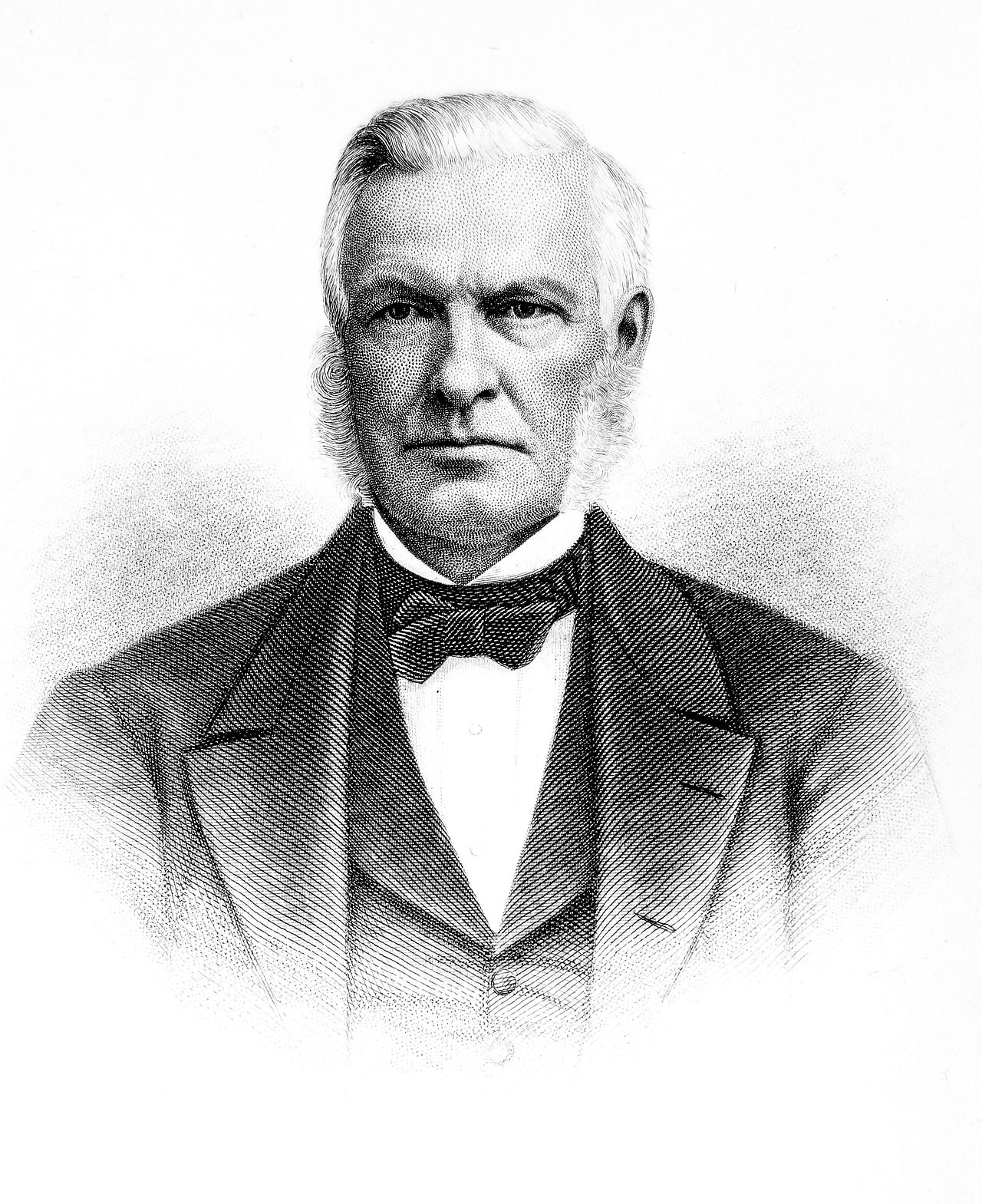
September 1, 1856
Fall of 1856 Auction held for distribution of first 250 lots
June 10, 1857
Consecration Ceremony
In the spring of 1857 the Trustees started planning the consecration of the grounds. The committee responsible for the arrangements included Henry Bigelow, Plympton and Henry Lambert, who recently arrived in West Newton. (The fountain at the corner of Fountain and Chestnut streets, “Child Playing in the Calla Lilies” by Anne Whitney was erected in memory of his widow).
The ceremony took place on the afternoon of June 10, 1857, in the grounds. The proceedings were opened by Dr. Bigelow, and the main address was given by the Reverend Frederick Daniel Huntington of Cambridge. Two hymns were written specially for the occasion, one by S. Jennison Jr. of Worcester, the other by Reverend Samuel Smith, author of “America” and minister to Newton’s First Baptist Church. Prayers were offered by the ministers of the First and Second Churches in Newton, the Reverends Daniel Furber and Lyman Gilbert.
1860 – 1869
April 4, 1860
The name “Newton Cemetery” was formally adopted
Previously called “Grove Hill Cemetery. The “Plan of Grove Hill Cemetery” drawn by Marshall Rice established what is still the basic pattern of the central core of the modern cemetery.
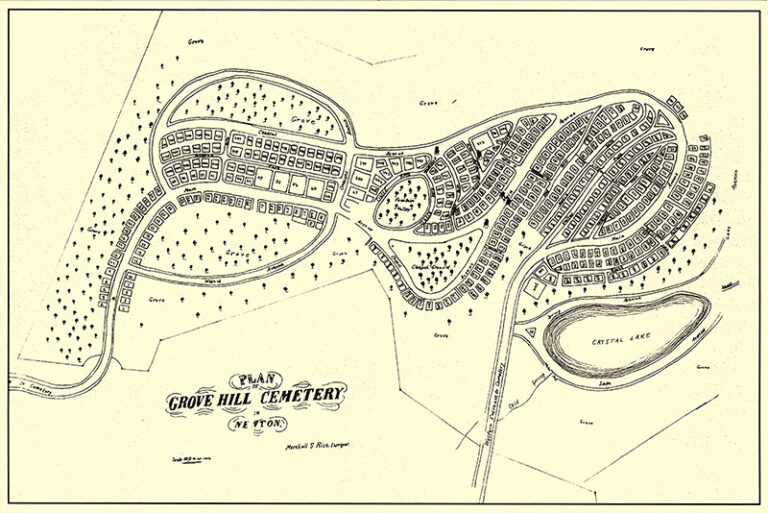
April 16, 1860
Superintendent, Henry Ross is hired
Henry Ross, superintendent for 39 years from 1869-1899, is hired. He was born in Newtonville, the son of Silas and Nancy Ross, and attended Newton schools and Seth Davis private school in West Newton before beginning to learn the mason’s trade from his father. Ross worked first as a mason and later as a florist with Edwin Fewkes of Newtonville.By the time Ross became superintendent, the cemetery had grown from the first 30acre site to 65 acres. According to Smith’s History of Newton (1880), “the success of the enterprise [was] due largely to [Ross’s] taste and skill, and his devotion to the interests of the cemetery.”
Ross was particularly interested in horticulture and landscape gardening. He was an active member of the Newton Horticultural Society, read books on landscape gardening by Gilpin, Repton, and Downing, and visited many local nurseries and greenhouses, including those at the Hunnewell estate in Wellesley.As cemetery superintendent, he came in contact with many Newton families. Although Ross did not dwell on death, the number of child burials he recorded is a poignant reminder of the fragility of children’s lives before the advances of modern medicine.
-Excerpted from the Henry Ross Journals
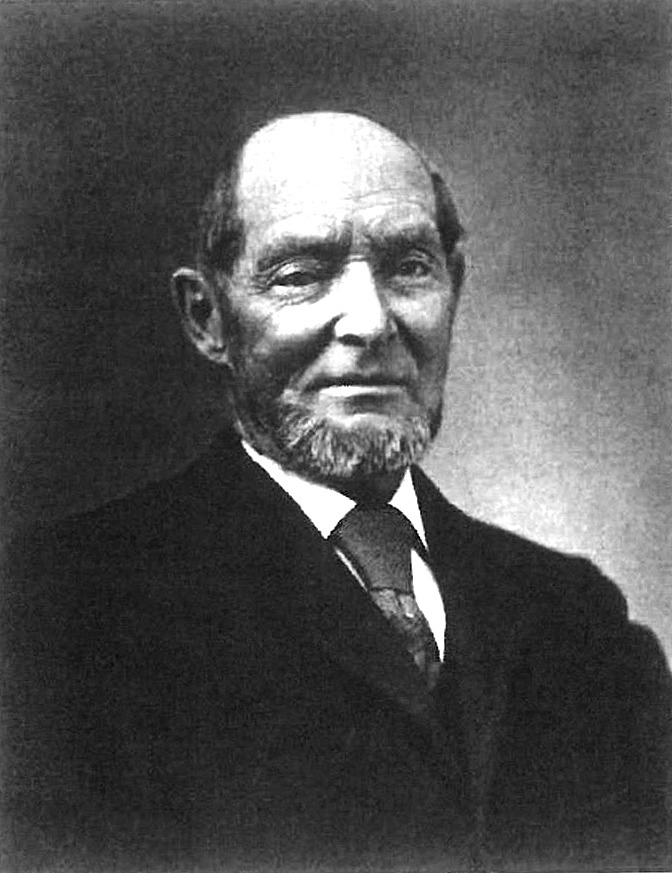
May 5, 1862
First Military Funeral
First Military Funeral for William Benson of the 1st MA Infantry, killed at Williamsburg, VA
July 1, 1864
Dedication Ceremony for the Civil War Monument
From the City of Newton:
The Soldier’s Monument bears the names of 61 Newton soldiers who were killed or died from service in the Civil War. Erected in 1864, the Newton Soldier’s Monument is believed to be the second oldest monument to Civil War dead in Massachusetts, and is one of the earliest in the Northeast to be built while the conflict was still in progress. By 1862, in the early days of the war, Newton lost at least 14 men. The monument is a stone obelisk and an entablature made from granite and marble, and was designed and carved by Chester Mitchell of the Mitchell Granite Company in Quincy. The Monument project became a cause celebre in Newton, prompting over 1200 donors to contribute funds, and over 1100 public school children to contribute a dime each to the cause.
The obelisk, entablature, and structural curbing on the knoll cost approximately $5,500 to build. The Soldiers’ Monument was dedicated on July 23, 1864, in a ceremony marked by songs, poems, speeches, and sermons. There are no burials on the site of the Newton Soldiers’ monument, but about a third of the men on the monument are buried in Newton Cemetery. At the time of the 1864 dedication, 43 names were inscribed in alphabetical order on two of the three marble panels of the entablature. Eighteen Newton soldiers who died after the dedication ceremony were soon added to both marble tablets. The central marble panel in the entablature remains blank.
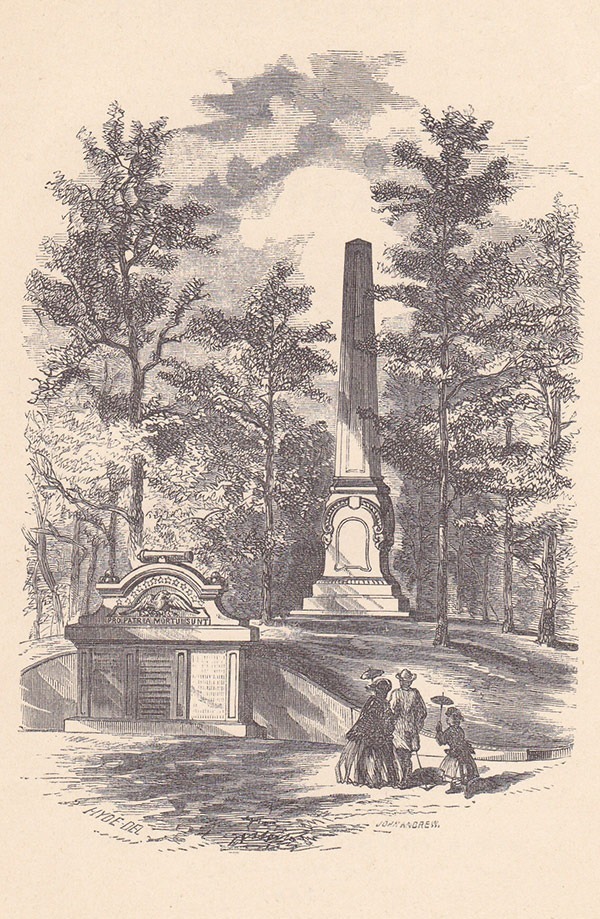
September 14, 1864
First side hill tomb built
First side hill tomb built, for Gov. William Claflin (27th governor, 1869 – 1872)
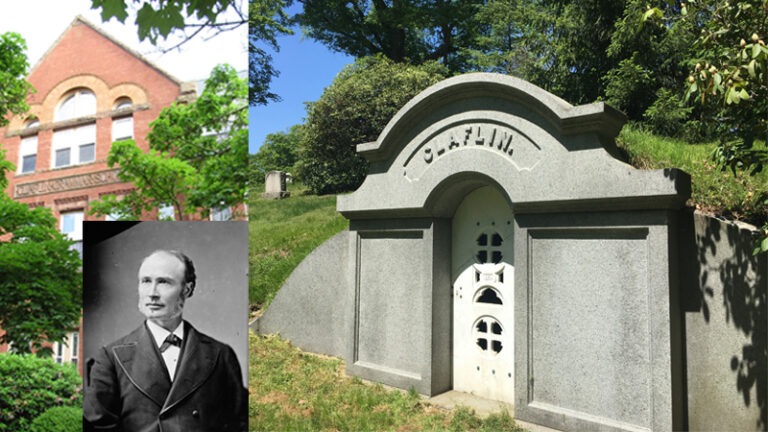
January 15, 1866
First Greenhouse is built by Henry Ross
July 26, 1869
The Cemetery builds a new front gate
The Cemetery builds a new front gate, by George Meacham, the designer of the Boston Public Garden and counts over 4,000 visitors that year.
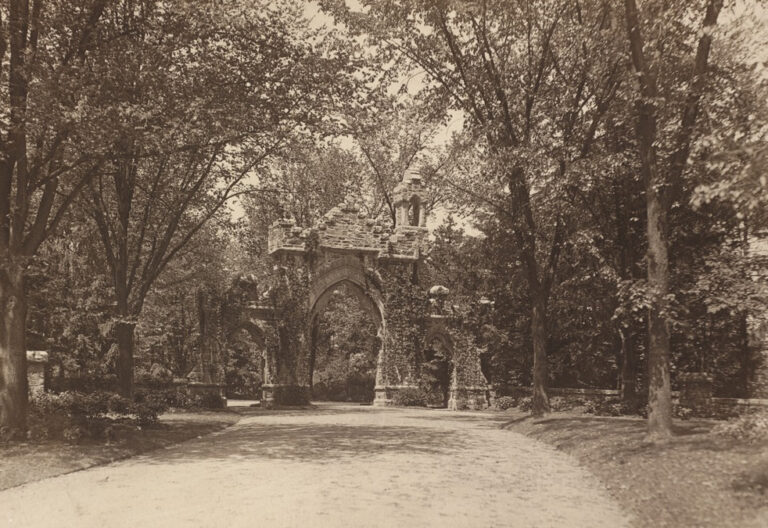
1870 – 1879
January 15, 1871
Cemetery Ave. (now Cummings Road) entrance is closed permanently
January 15, 1874
Charles Wilson Ross becomes assistant (1874-1890) to Henry Ross
Charles Wilson Ross, Assistant Superintendent of Newton Cemetery, 1874-1890.
In 1874, Charles Wilson Ross was hired as Henry Ross’s assistant. Charles was Henry’s cousin and the younger brother of the builder Henry F. Ross (often confused with Henry Ross), who built the original chapel at Newton Cemetery. Charles W.’s first official job was helping to put up a wooden fence along Beacon Street. When he left in 1890 to become Newton’s Superintendent of Streets, it was said “…[he] has been assistant with Henry Ross in the superintending of the Newton Cemetery and has much experience in the handling of men and construction of drives of the Cemetery and the laying out of its beautiful park-like expanses of hill and valley, slope and plain…”
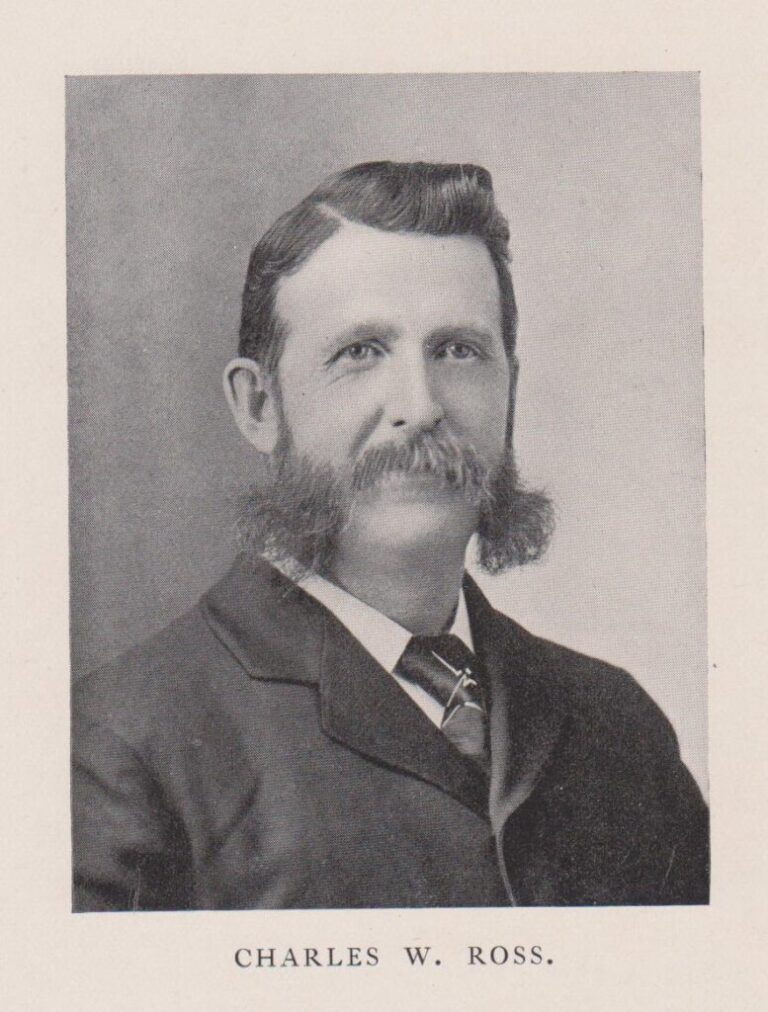
January 15, 1879
Newton Cemetery buys 9 acres on the east side of Walnut Street
1880 -1899
Aprill 5, 1880
Newton Cemetery celebrates 25th Year
April 30, 1885
Newton Sentinel maple tree removed from the Claflin School
Newton Sentinel maple tree removed from the Claflin School in Newtonville and planted at NCC. Cuttings given to Arnold Arboretum in 1885
The Sentinel Maple is a mutant of the sugar maple. It lacks a central trunk and has the narrowest canopy of any known maple. Recognized as unusual by both J.F.C. Hyde, Newton’s first Mayor, and A.H. Fewkes, son of the Newton Centre florist, it seems that they both watched it grow in the grounds of the first Claflin School in Newtonville. When additions to that building were imminent and the tree had to be moved, it was through Hyde’s influence that it was taken to the Cemetery and not to the Arnold Arboretum. In 1885, Newton Cemetery Superintendent Henry Ross gave cuttings to the Arboretum where it has been propagated.
The Newton Cemetery tree, “Newton’s Own Tree”, is now over fifty feet tall and can be seen close to the wall just south of the main entrance. The Daughters of the American Revolution placed a bronze marker at its base in 1937.
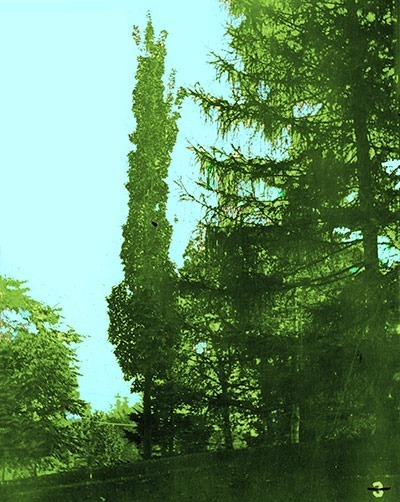
October 3, 1885
Bigelow Chapel is dedicated
January 15, 1887
First telephone is installed in the Cemetery Office
November 18, 1888
The Cemetery becomes accessible via public transportation
Late 1880s The Cemetery becomes accessible via public transportation . After the electrification of the street railways in the late 1880s, the cemetery became accessible by public transport. In due course there was a line from Newtonville down Walnut Street to Upper Falls, another from Newtonville along Homer Street to the Centre and, when construction of the “Boulevard” was completed, down Commonwealth Avenue from Boston to Auburndale.
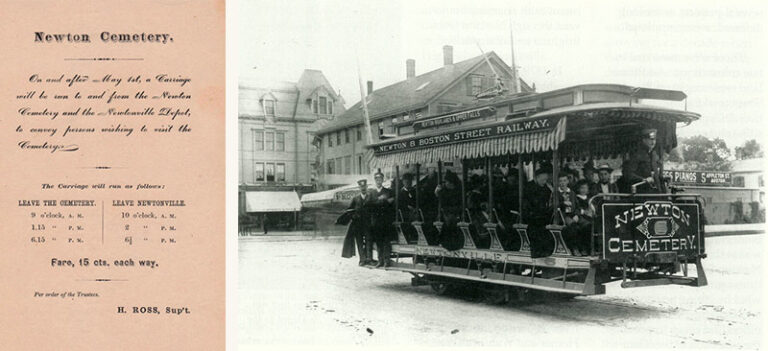
January 18, 1889
Grand Army of the Republic Charles Ward Post
Grand Army of the Republic Charles Ward Post 62 buys land for the Soldiers’ Lot.
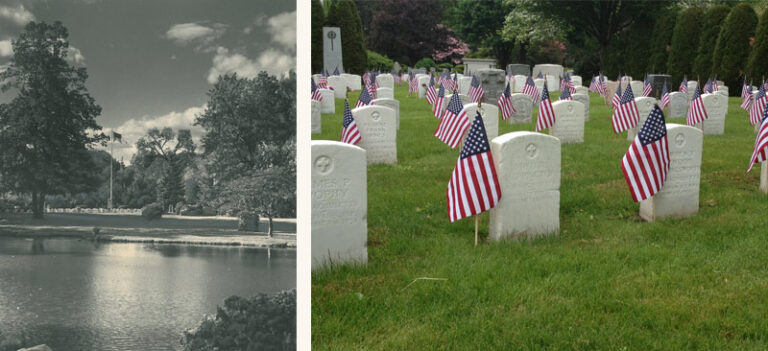
January 18, 1895
H. Wilson Ross becomes assistant to Henry Ross
May 2, 1898
James F.C. Hyde buried at Newton Cemetery
James F.C. Hyde, Newton’s first mayor, becomes first member of Newton founding families to be buried at Newton Cemetery (instead of East Parish Burying Ground on Centre Street). When the Newton Park Commission was appointed in 1885, Hyde and Newton Cemetery superintendent Henry Ross were two of the six members.
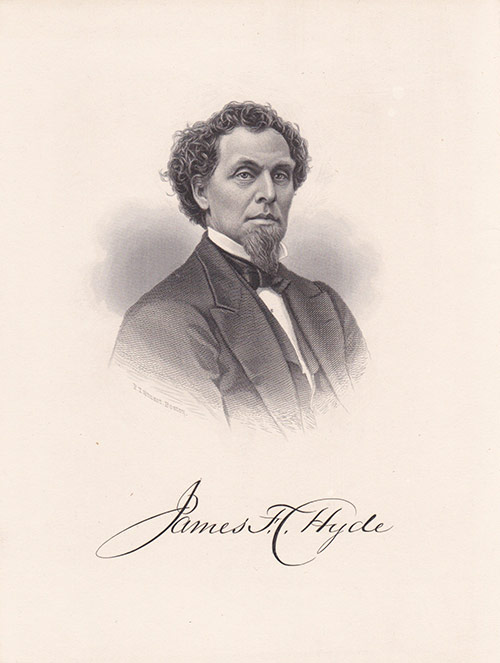
1900 – 1939
April 5, 1905
Newton Cemetery Celebrates 50th Year
January 18, 1904
Newton Cemetery receives first place among rural cemeteries
NCC receives first place among rural cemeteries by the Association of Cemetery Supervisors.
January 18, 1907
Work begins on Section I and I – South
January 18, 1908
Newton Cemetery buys its first automobile
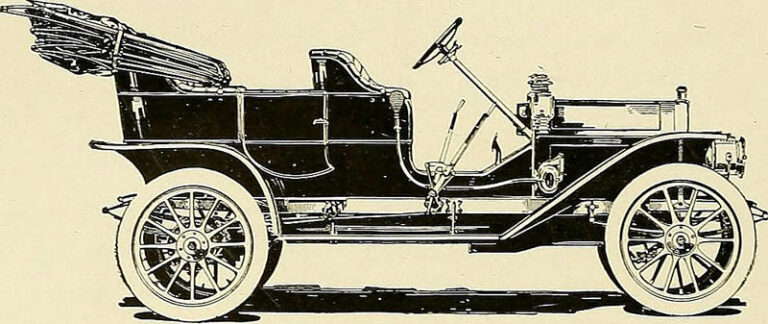
January 18, 1915
The current Administrative Office is built
In 1913, the Trustees voted to put up a new, modern building to replace the office which, for fifty years, had shared premises with the living quarters of Henry Ross, the first superintendent of Newton Cemetery. Located near the pre-1869 cemetery entrance, the old building was “of a character that would not have been tolerated for a day on the premises of any of our proprietors.” An expenditure of up to $18,000 (inclusive of landscaping and furnishing) was authorized and Kendall, Taylor and Company, the architectural firm that designed many of the early buildings for the Newton (now Newton-Wellesley) Hospital, was chosen to draw the plans. The contractors were Hurley Brothers. In February, 1915, the first meeting was held in the building that, with minor alterations, still serves as the office of the Corporation.
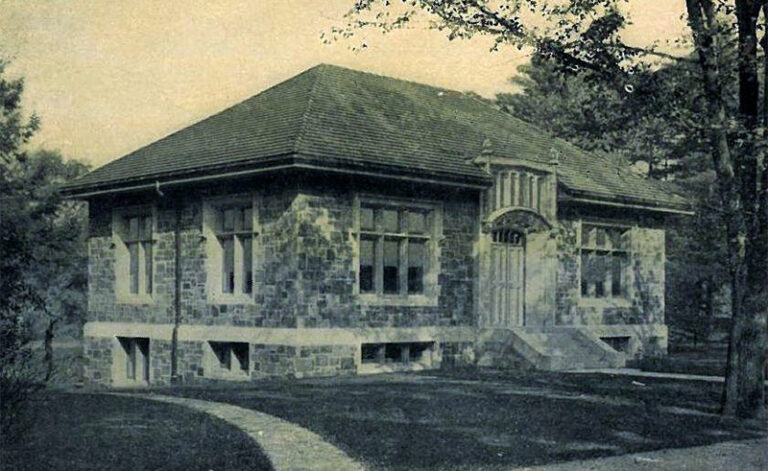
November 11, 1920
Sections D, R, E, and S are developed
November 18, 1921
An ice storm destroys many of the cemetery’s finest trees
A November ice storm destroys many of the cemetery’s finest trees, mostly maples. 250 cords of wood were cut.

November 23, 1926
Development begins in Sections O and P
April 5th, 1930
Newton Cemetery Celebrates 75th Year
September 18, 1933
Murdock Fountain installed
The fountain is named for Francis Murdock, who was the nephew of the Corporation’s first treasurer, Joseph N. Bacon. He was a trustee of the Newton Savings Bank, the Newton Trust Company and the Newton National Bank and served the Newton Cemetery Corporation for over forty years as clerk, auditor and trustee. When he died in 1917, he left $5,000 for a fountain to be erected in his memory. Because of the “high cost of materials” it was decided to invest the money and allow interest to accumulate until there were sufficient funds for a memorial “worthy of the giver”.
The subject was discussed several times in the years that followed, but it was not until 1933 that the Trustees approved the fountain design by Gladys (Ross) Sebold, daughter of the first cemetery superintendent Henry Ross. Mrs. Sebold was a member of the Newton High School class of 1919 and the Smith College class of 1924. After receiving her A.B. from Smith, she entered the Cambridge School of Architecture & Landscape Architecture where she took courses and did field work from 1924 to 1927.
In June 1927, she received a Certificate in Landscape from the Cambridge School. In 1934, when the Cambridge School and Smith College affiliated, her Certificate was re-evaluated and she received a Master’s in Landscape Architecture at the June 18th Commencement ceremony. She worked for three years in the New York City office of Beatrix Farrand, one of the founding members, and the only woman, of the American Society of Landscape Architects. Both Mrs. Ross and her husband (a professor of landscape architecture) were members of the ASLA.
The contract for construction was awarded to Jones Brothers Co., a locally-owned quarry business that also provided the granite for the fountain. The owner, Seward W. Jones, was a Newton resident and was active in the Massachusetts legislature. When he died, he was interred at Newton Cemetery in a family lot located near the fountain. The fountain project included laying a thousand feet of pipe to carry water to and from the Chapel ponds, and, as in the case of the new City Hall then under construction across Homer Street, gave “employment to quite a force of men” at a time when work was hard to find.
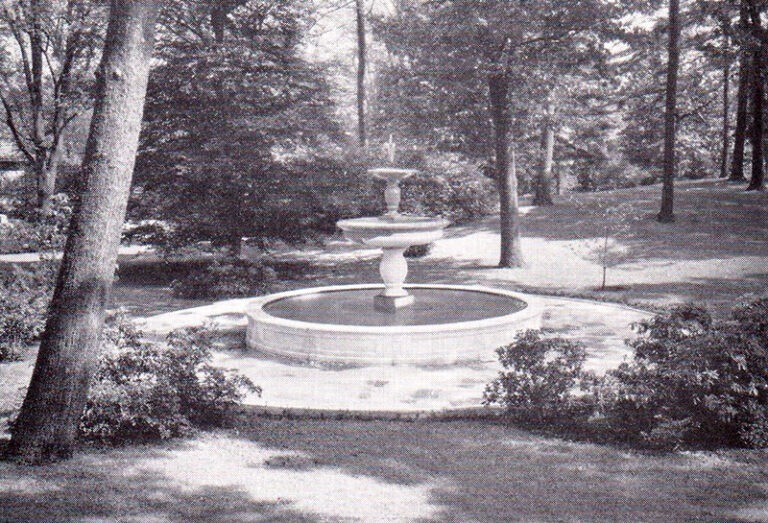
January 18, 1938
MDC takes 2 acres of Cemetery land for a pumping station
MDC takes 2 acres of Cemetery land for a pumping station on Commonwealth Avenue. Also, Newton Cemetery replaces horses with a hydraulic dump truck.
October 20, 1939
Section E opens
1940 – 1959
January 18, 1943
New chapel, crematory and columbarium are opened
January 18, 1950
First urn garden is opened
First urn garden is opened. Also, the City takes 4 acres by eminent domain at the corner of Walnut and Homer for new library site, a plan that doesn’t happen until 1991.
August 1, 1952
Sections Y and Z are developed
April 5, 1955
Newton Cemetery Celebrates 100 Years
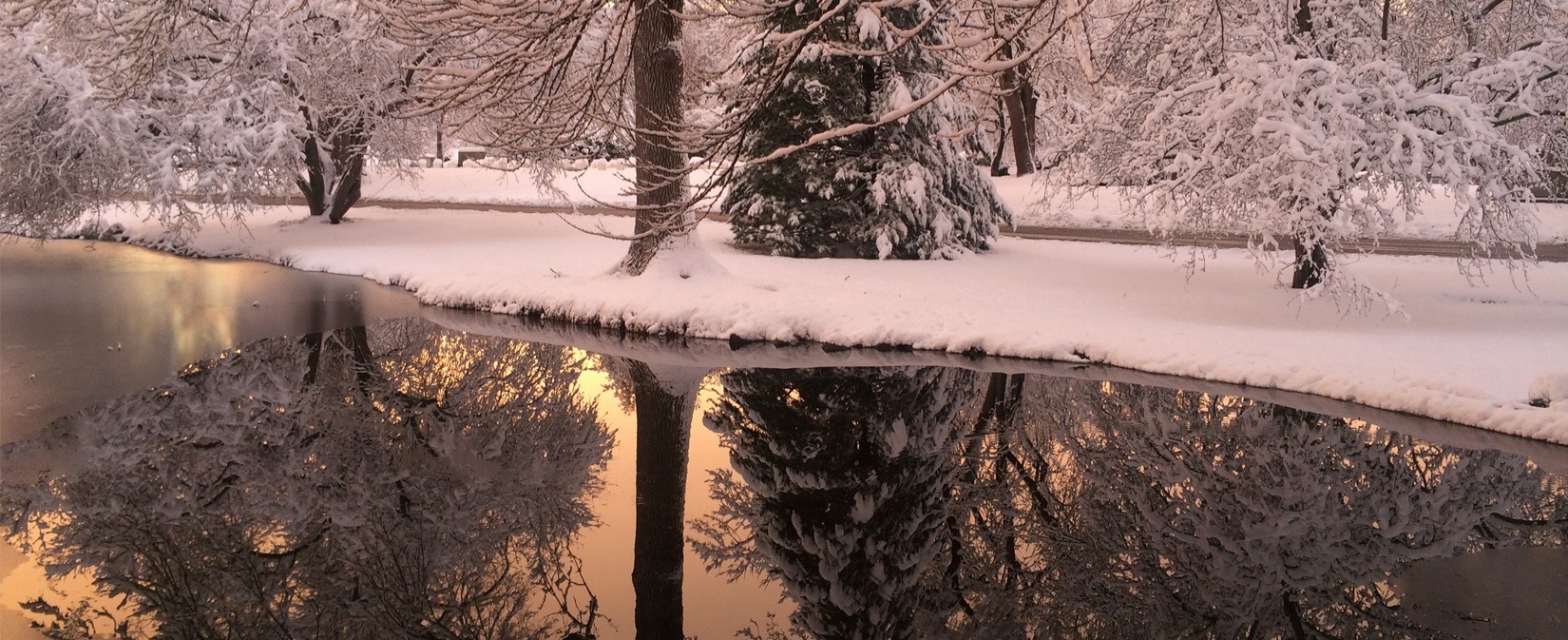
January 18, 1956
Additions are made to the chapel and columbarium
Additions are made to the chapel and columbarium by architect Edwin B. Goodell and landscaped by the Olmsted Brothers.
1960 – 1979
May 2, 1966
Section B-North developed
July 27, 1973
Section E-North developed
June 30, 1974
Section D-North developed
March 5, 1975
Section C-North developed
1980- 1999
April 5th, 1980
Newton Cemetery Celebrates 125th Year
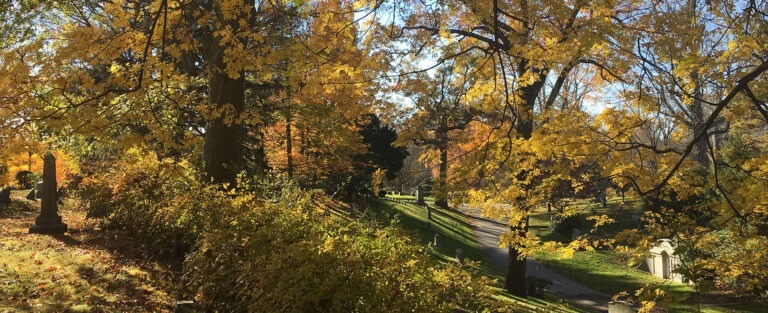
February 2, 1981
Michael Keblin becomes president
January 18, 1985
New maintenance building and greenhouses built
New maintenance building and greenhouses built, designed by Douglas Okun and Associates.
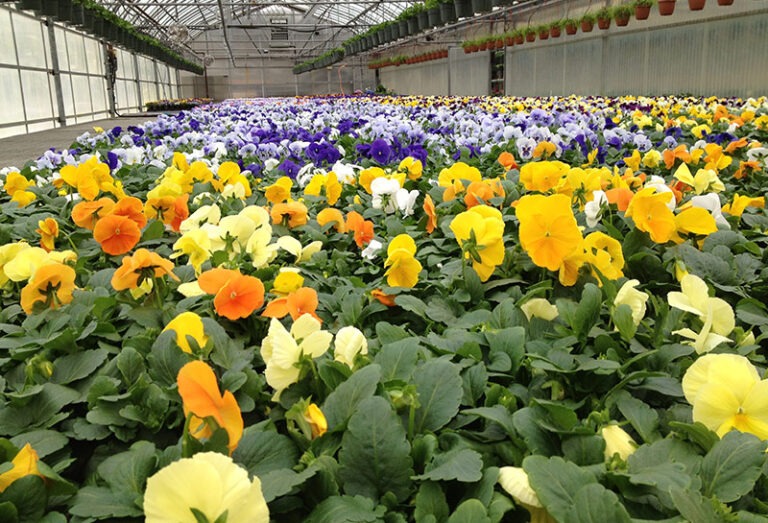
January 18, 1995
Crematory is updated by Stirling Brown Architects
July 26, 1996
New main gate is erected
2000 – 2019
January 31, 2004
Walnut Court opens
Walnut Court, Newton Cemetery’s first Community Mausoleum opens.
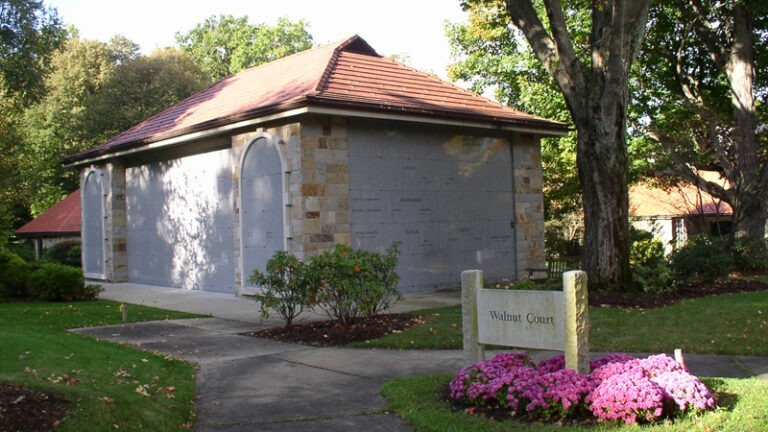
April 5, 2005
Newton Cemetery Celebrates 150th Year
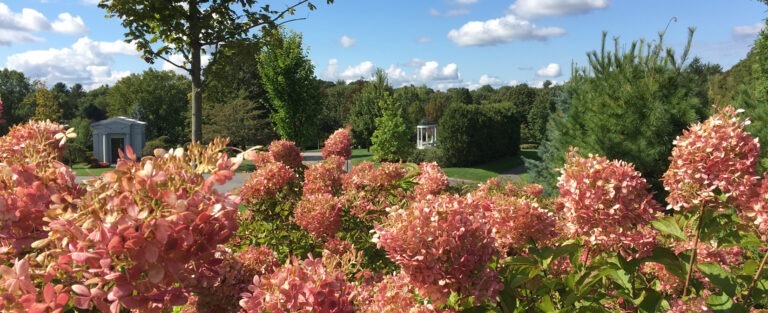
October 1, 2011
Mary Ann Buras becomes cemetery president
February 18, 2012
Walnut Court II opens
April 10, 2012
The Board agrees to develop the last 10 acres
The Board agrees to develop the last 10 acres of available land in the North West corner of the cemetery.
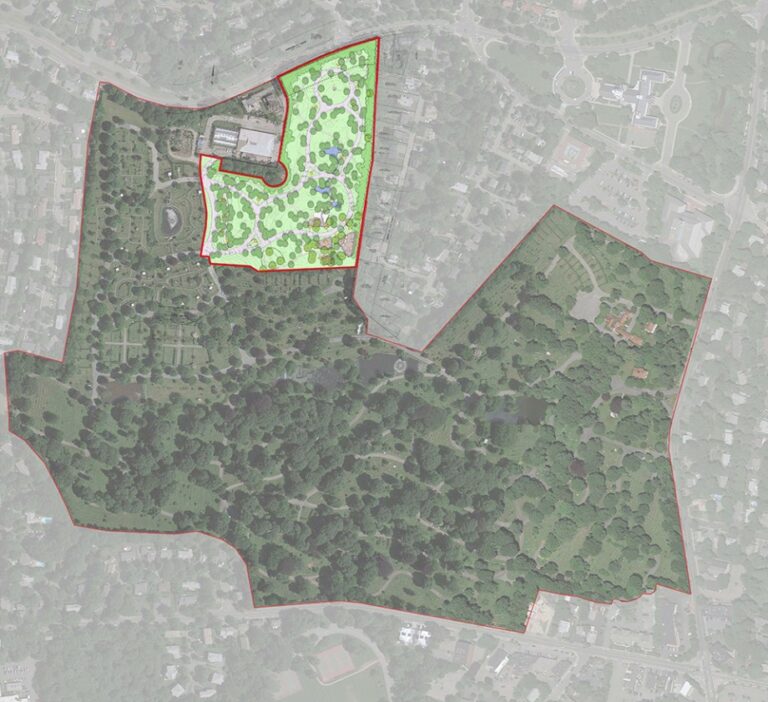
May 18, 2014
Civil War Soldiers Monument rededicated
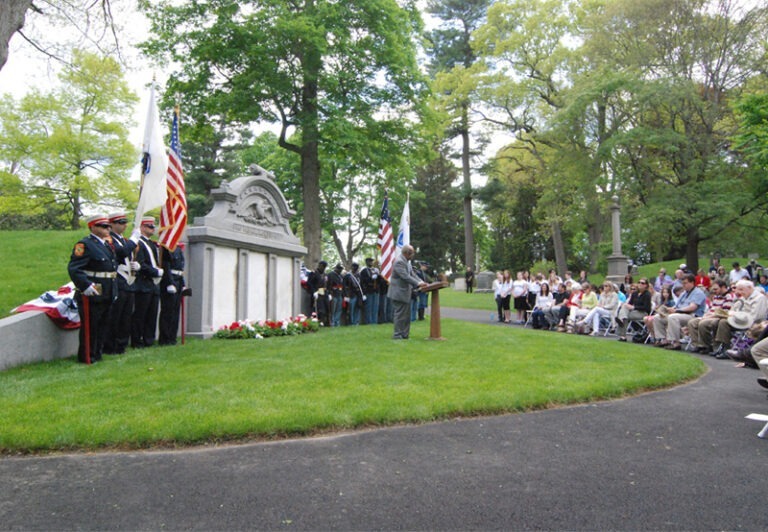
September 4, 2014
Newton Cemetery receives Level II accreditation as an arboretum
By achieving particular standards of professional practices deemed important for arboreta and botanic gardens, Newton Cemetery is awarded a Level II Arboretum Accreditation by the ArbNet Arboretum Accreditation Program and The Morton Arboretum. There are more than 140 tagged specimens on the 100 acres of grounds, including a rare Sugar Maple, the Newton Sentry, the original tree of its kind.
Read more here.
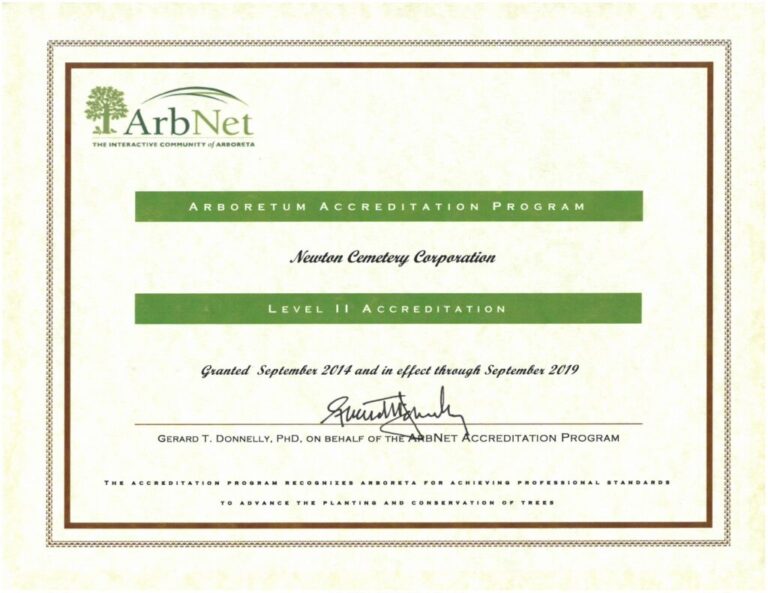
October 18, 2014
The newly developed “Dell” is open to the public
View Image 1 > | View Image 2 >
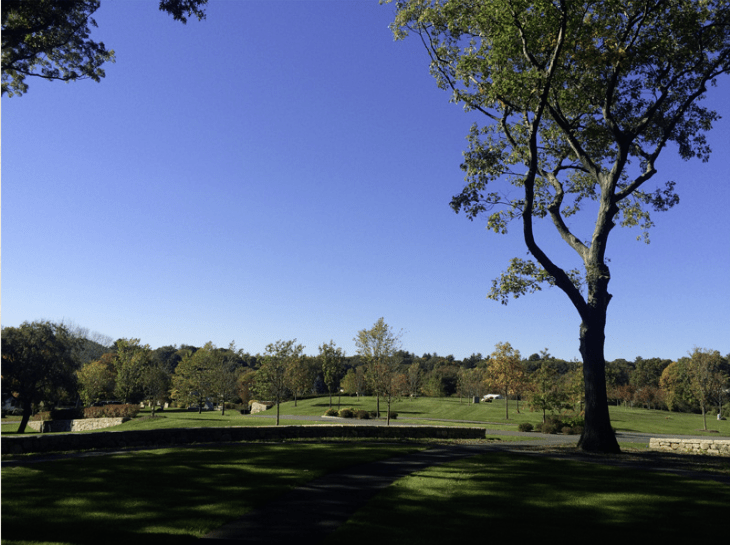
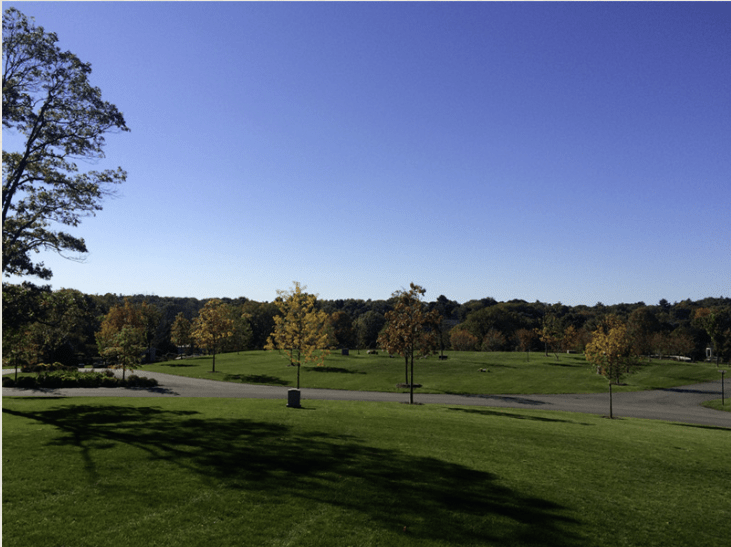
November 9, 2016
Murdock Fountain Receives Preservation Award
The Murdock Fountain in Newton Cemetery is located just beyond the main gate and across the road from the office in a wide expanse of lawn dotted with trees and shrubs. It prominently greets visitors as they enter the cemetery and provides a soothing location for reflection as the water splashes from the two upper bowls to the lower basin.
The fountain is named for Francis Murdock, who was the nephew of the Corporation’s first treasurer, Joseph N. Bacon. He was a trustee of the Newton Savings Bank, the Newton Trust Company and the Newton National Bank and served the Newton Cemetery Corporation for over forty years as clerk, auditor and trustee. When he died in 1917, he left $5,000 for a fountain to be erected in his memory. Because of the “high cost of materials” it was decided to invest the money and allow interest to accumulate until there were sufficient funds for a memorial “worthy of the giver”. …
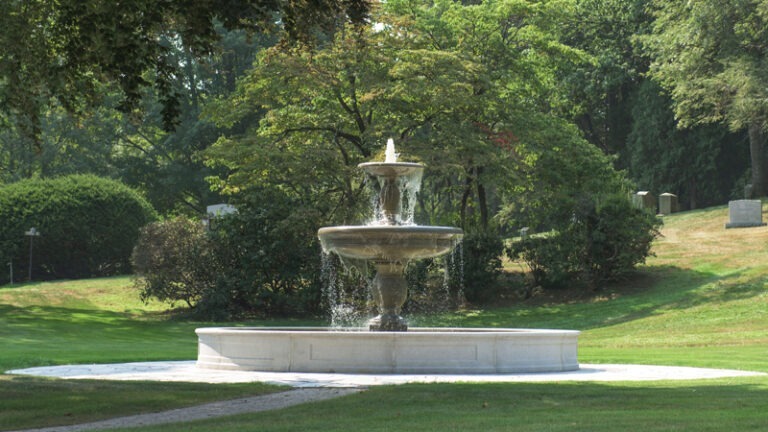
January 1, 2017
Friends of Newton Cemetery established
As a charitable, non-profit organization, the Friends of Newton Cemetery is dedicated to maintaining the cultural, historical, and natural aspects of the Cemetery.
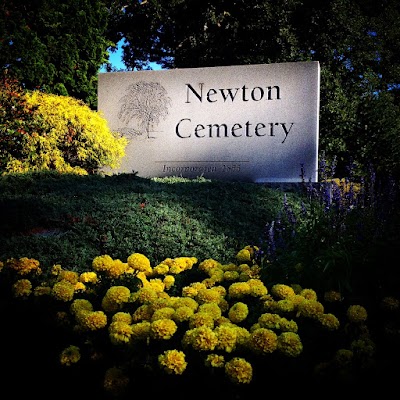
February 5, 2018
CPA Funding Awarded for Whipple Beal Fence
CITY COUNCIL ACTIONS IN CITY COUNCIL MEETING, MONDAY, FEBRUARY 5, 2018
#58-18: CPA funding request for $60,000 to repair a fence at Newton Cemetery
COMMUNITY PRESERVATION COMMITTEE recommending the appropriation of sixty thousand dollars ($60,000) from the Community Preservation Fund’s historic resources budget reserve and fund balance to the Planning & Development Department for a grant to the Newton Cemetery to restore and rehabilitate the Whipple-Beal cast iron fence, as described in the proposal submitted to the Community Preservation Committee in September 2017.
Finance Committee Approved 8-0 (Jan. 23, 2018)
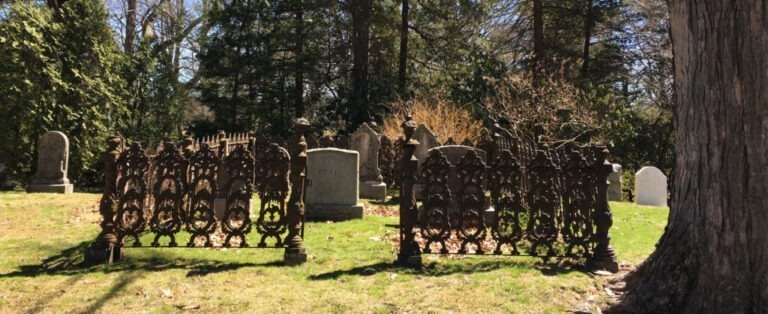
January 14, 2019
First Artist in Residence at Newton Cemetery
ARTIST KAREN KROLAK RECEIVED A GRANT FROM THE NEWTON CULTURAL COUNCIL AND WILL BE THE FIRST EVER ARTIST IN RESIDENCE AT NEWTON CEMETERY.
What does it mean to be an Artist in Residence in a cemetery?
While some artists might immerse themselves in a project painting the bucolic grounds of this garden style cemetery, during her time as Artist in Residence at the Newton Cemetery, Karen Krolak researched ideas to include in her ongoing project, the Dictionary of Negative Space, and developed a walking tour that connects elements in the Cemetery landscape to entries in her dictionary. The dictionary is an interdisciplinary lament for the words that English lacks regarding the process of lamenting. Krolak interviewed Cemetery staff, plot owners and anyone else who has spent time on the grounds.
This program was supported in part by a grant from the Newton Cultural Council which is supported by the City of Newton and the Mass Cultural Council.
RELATED EVENTS:
Dictionary of Negative Space Book Reading
Friday, May 17th, 2019, 6:30PM
Newton Cemetery Chapel
Language in the Cemetery Landscape Walking Tour
Saturday, May 18th, 2019, 2:00PM
Newton Cemetery & Arboretum
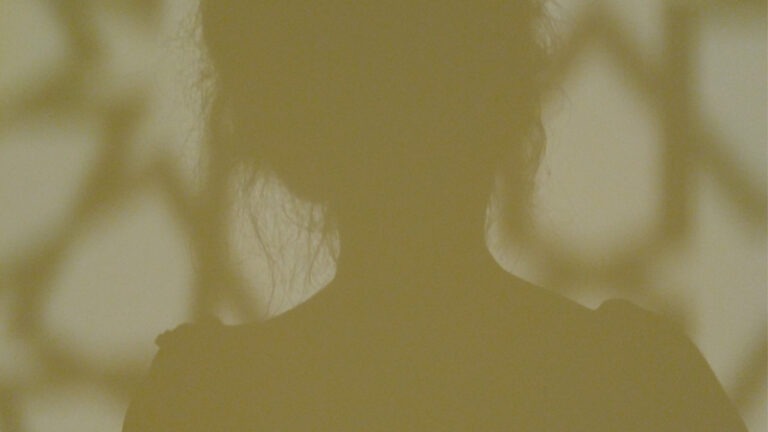
2020 –
Coming in 2024
The Knoll
Coming in 2024
Newton Cemetery & Arboretum is pleased to announce the creation of the newest section in the cemetery, The Knoll.
The Knoll will add 4+ acres to established grounds, and expand the environmental benefits of the arboretum. A variety of burial options will be offered in a beautifully designed area. A rolling landscape will be planted with a diverse selection of hundreds of new trees and thousands of new shrubs and plants. The Knoll, with the highest point in the cemetery, will overlook older as well as newer sections of the cemetery that will highlight flowing water features, a lagoon, natural ledge outcroppings, stone walls, and walking paths.
The public is welcome to explore and enjoy The Knoll when it opens in 2024. Appointments for inquiries regarding interment options can be made with the Newton Cemetery office.
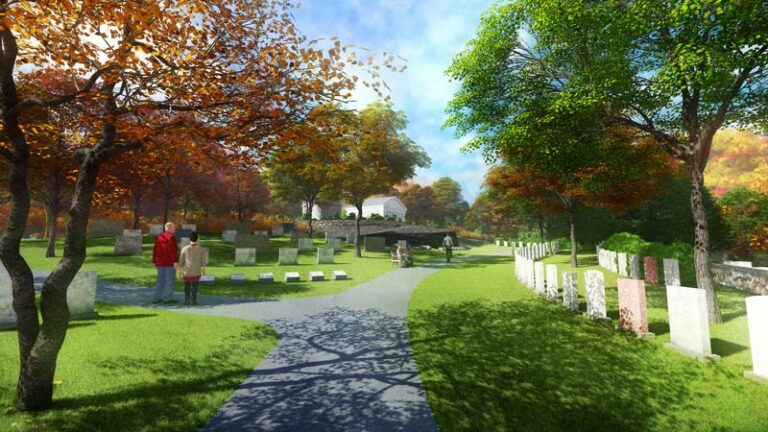
April 5th, 2030

